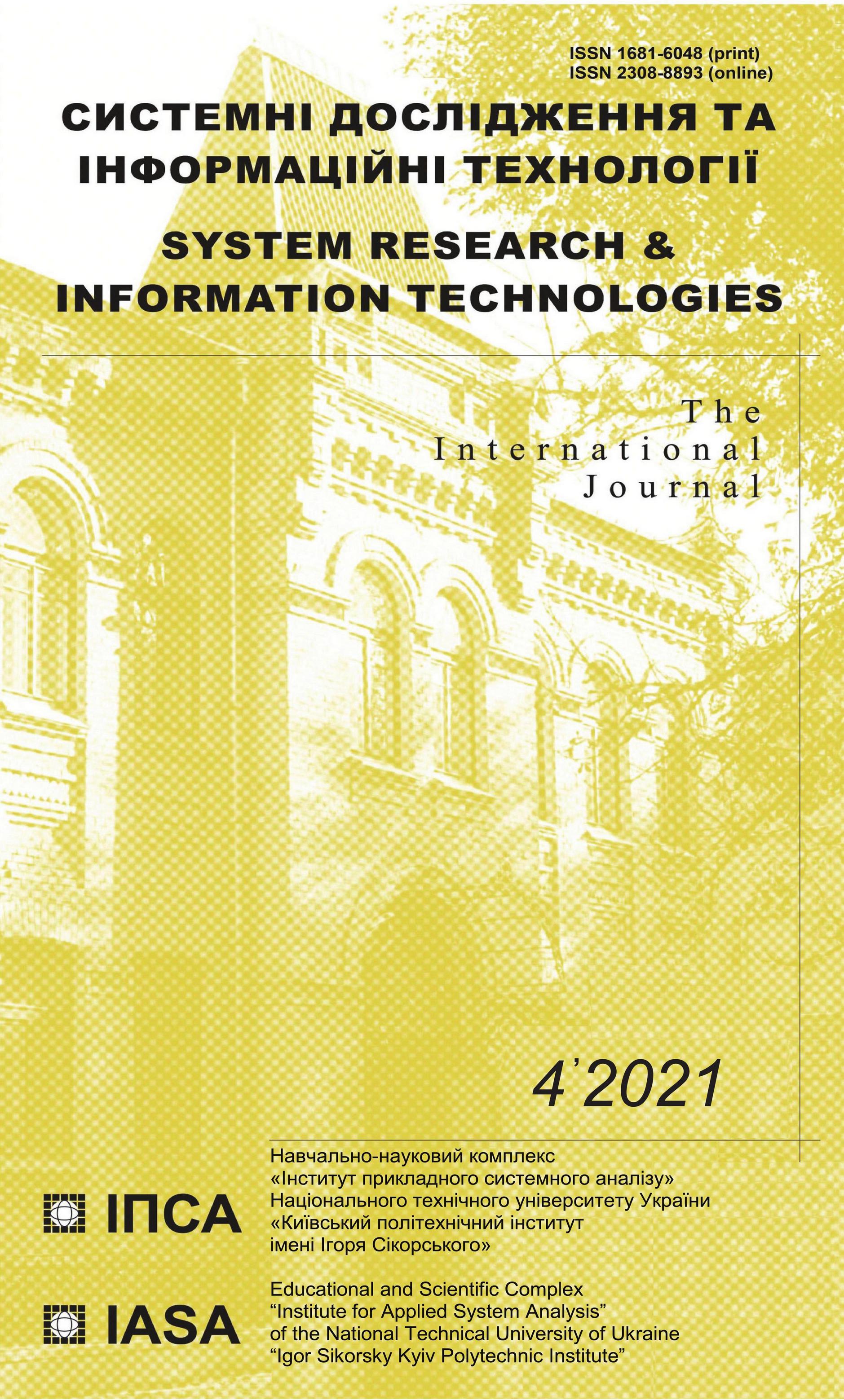Morphological model for underground crossings of water objects
DOI:
https://doi.org/10.20535/SRIT.2308-8893.2021.4.04Keywords:
ecological risks, technogenic risks, underground infrastructure, sewage draining, system methodology, morphological analysis, depressed sewer crossingAbstract
The construction of morphological model is considered for undesirable events regarding urban objects, as well as the consequences of such events, including interruption of operation, feasibility and time of restoration, material damage and casualties, ecological risks. Using this model, two-stage modified morphological analysis was conducted for two types of objects: pipe and tunnel depressed sewers. The results of comparison for depressed sewer crossings using the developed model are demonstrated both for the whole multitude of potential undesirable events and for the specific scenarios of sabotage, landslide, operational damage. The advantage of a tunneled depressed sewer over a pipe one is justified from the standpoint of minimization of technogenic and ecological risks of sewage draining.
References
N.D. Pankratova, H.I. Haiko, and I.O. Savchenko, Development of underground urban planning as a system of alternative project configurations (in Ukrainian). Kyiv: Naukova Dumka, 2020, 134 p.
Michael Sakellariou, Tunnel Engineering – Selected Topics. Athens: National Technical University of Athens, Books, IntechOpen, number 6201, 2020.
Hong Kairong, “Typical Underwater Tunnels in the Mainland of China and Related Tunneling Technologies”, Engineering, vol. 3, issue 6, pp. 871–879, 2017.
Zhong Zhou, Wenyuan Gao, Zhuangzhuang Liu, and Chengcheng Zhang, “Influence Zone Division and Risk Assessment of Underwater Tunnel Adjacent Constructions”, Emerging Trends on Optimization and Control under Uncertainty in Transportation and Construction, vol. 2019, article ID 1269064. Available: https://doi.org/10.1155/2019/1269064
Michael Sakellariou, “Topics of Analytical and Computational Methods in Tunnel Engineering”, in Michael Sakellariou (ed.) Tunnel Engineering – Selected Topics, 2020. doi: 10.5772/intechopen.90849
M. Fang and Z. Liu, “3D numerical simulation of influence of undercrossing shield construction on existing tunnel”, Journal of Railway Science and Engineering, vol. 8, no. 1, pp. 67–72, 2011.
J.X. Wang, X.Z. Yang, and B. Ruan, “Numerical simulation of shield tunnel construction on the impact of neighboring piles foundation”, Journal of Railway Science and Engineering, vol. 11, no. 1, pp. 73–78, 2014.
World Urbanization Prospects: Highlights. United Nations. New York, 2019. Available: https://population.un.org/wup/Publications/Files/WUP2018-Highlights.pdf
N.D. Pankratova and I.O. Savchenko, Morphological analysis. Problems, theory, applications (in Ukrainian). Kyiv: Naukova Dumka, 2015, 245 p.
N. Pankratova, I. Savchenko, G. Gayko, and V. Kravets, “Evaluating Perspectives of Urban Underground Construction Using Modified Morphological Analysis Method”, Journal of Automation and Information Sciences, vol. 50, issue 10, pp. 34–46, 2018. doi: 10.1615/JAutomatInfScien.v50.i10.30
H.I. Haiko, I.O. Savchenko, and I.O. Matviichuk, “Development of a morphological model for territorial development of underground city space”, Naukovyi Visnyk Natsionalnoho Hirnychoho Universytetu, no. 3, pp. 92–98, 2019. Available: doi.org/10.29202/nvngu/2019-3/14
H.I. Haiko, I.O. Savchenko, and V.V. Vapnichna, “Morphological model of development of underground infrastructure of large cities for minimization of ecological and technogenic risks of underground space (in Ukrainian)”, Scientific-technical journal “Geoengineering”, no. 4, pp. 7–18, 2020.
H. Haiko, I. Savchenko, and I. Matviichuk, “A Morphological Analysis Method-Based Model of Assessing Territories for Underground Parking Lots”, 2020 IEEE 2nd International Conference on System Analysis and Intelligent Computing, SAIC 2020, pp. 173–176. doi: 10.1109/SAIC51296.2020.9239251

